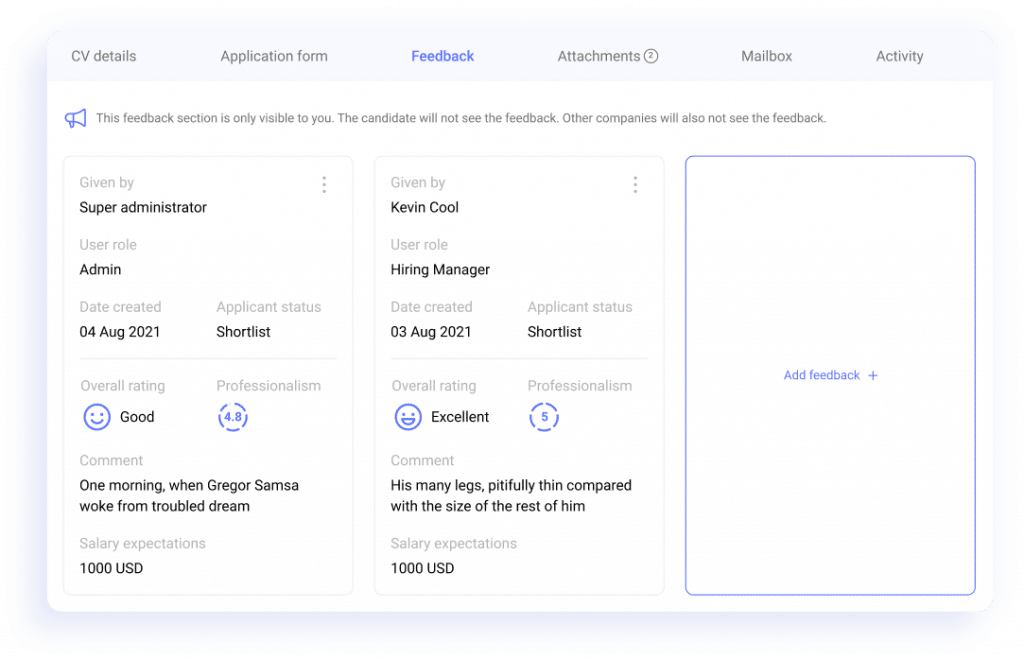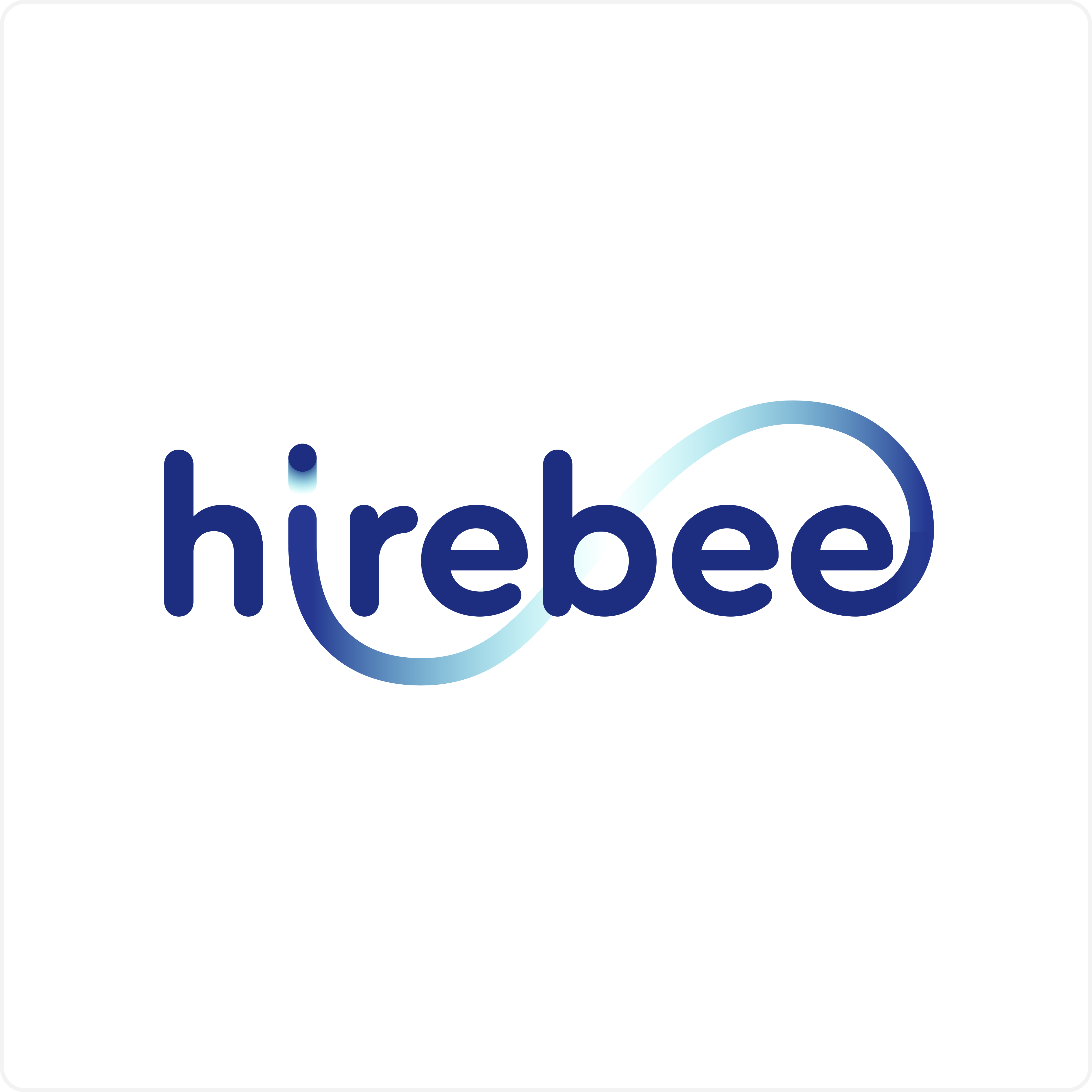Screening and evaluating candidates is essential to the recruitment funnel. The way you screen and evaluate your candidates can be the difference between shortlisting the best applicants and certain doom. You need to have a good setup for moving the right candidates through the recruitment funnel, there’s no two ways about it. But we know that is a common struggle for hiring teams to evade inconsistencies in the methods and criteria used to screen and evaluate candidates. That is why we have compiled this HR tutorial to inspire you to create the perfectly structured recruitment funnel, which will help you identify the best talent in your pool of applicants quickly and efficiently.
Table of Contents
ToggleSeparating the candidate screening process into stages
Your goal when setting up your candidate screening should be to create a standardized process that is both practical and efficient. To align with the overall candidate journey, it’s a good idea to separate the screening process into three or more distinct stages. Each stage should be designed to achieve a specific goal using a defined method.
Our recommended approach is to set out a goal to always halve your number of applicants throughout every stage of your candidate screening process. So if, for example, you start out with 50 applicants, the goal of your initial screening stage should be to reduce that number to around 25 applicants, and then so on and so forth.

Stage 1: Initial screening with AI
The first stage of the candidate screening should look for eliminating candidates based on their resumes to the applied job position. Screening these resumes automatically by letting the AI read them will both save a lot of time and produce more accurate results than a human screener. Doing this, you can eliminate the bottom 50% of the candidates as ranked by the AI, and move on to the next candidate screening stage.
Of course, you can also have your human input by skimming through some of the bottom 50% of the candidates, and identifying some you would like to give the benefit of the doubt by moving them through to the second stage.
Learn more about automated candidate screening with AI >> The ultimate guide to automated candidate screening
Stage 2: Evaluating skills with assessments
Congratulations! You’re through to the next hiring stage! That is what you should be saying to the candidates you advanced to the next screening stage. That’s right, for this next screening stage, you should get in contact with the candidates. Using their mailing address, which they submitted in the application form, you can mail them a message informing them of their progress.
With this email, you should also attach an assessment to evaluate the proficiency of your candidates’ relevant skills. So at this stage, you should not be screening for the candidates’ listed skills, but rather for the proficiency of these skills. You should verify the possession of these skills and advance the most skillful candidates through to the next stage.
However, you should not only mail the qualified candidates, but also those who got rejected. Letting the rejected candidates know exactly why they got rejected as quickly as possible improves the candidate experience, making it more likely for these people to consider future job offers from your company, and maintaining a positive employer brand image.
Now, this may seem like a lot of work, but through Hirebee’s dashboard, you will be able to centralize and automate all of these processes. Integrations with candidate assessment tools, mail, and customizable mail templates for automated emailing will all significantly boost the speed at which you will be able to communicate with all of your candidates, save the resumes of the rejected applicants as passive candidates, and send and evaluate candidate assessments.
Learn more about how you can automate and centralize your recruitment process with Hirebee >> Recruitment Automation – Hirebee
Stage 3: Taking a more in-depth dive into resumes and portfolios
After having narrowed down the pool of candidates to a quarter of what it initially was, it would now be the ideal time to start shortlisting candidates for interviews. The candidate screening should now take a more laborious approach, which would involve delving deeper into the candidates’ resumes and portfolios, verifying referrals, and evaluating different aspects of the candidates’ profiles through a team collaboration effort. You can also communicate with the remaining candidates throughout this process, conducting phone screening or otherwise clarifying some needed information. Hopefully, that should narrow down the size of your candidates to a manageable amount for conducting interviews.

Evaluating candidates with interviews
Reaching the interviewing stage must be one of the most satisfying feelings for a hiring team. After screening through all the applicants, you finally have a shortlist of candidates to pick from! And usually, it’s really up to the hiring team on how they would like to conduct their interviews, and on what merits they will be scoring the interviewees. Are you going to be conducting the interviews to assess candidates’ skills, or ambitions? How many interview stages are you going to have?
As this process can vary greatly by company and the job position you’re hiring for, the tools you’re using to conduct interviewing processes must offer great flexibility and customization. This includes processes like: interview scheduling, interview scorecards, and video interviewing, all of which Hirebee offers.

Learn more about Candidate Relationship Management with Hirebee >> Candidate Relationship with Hirebee
Improvisation and flexibility
That being said, your candidate screening and evaluation set-up should depend on a host of factors, including your average number of applicants per job opening, the hours your hiring team can dedicate, etc. All of this can influence many aspects of your candidate screening and evaluation, such as the number of screening stages, the number of interview stages, and what the criteria for all these stages are.
The purpose of our tutorial is more to help guide you through what this process should more or less look like, and share some recruiting hacks as a bonus. Using the resources available at your company, you can work around limitations and leverage advantages to set up your candidate screening and evaluation, improvising along the way.
Conclusion
In conclusion, you should take your available resources and hiring volume into account before setting up your candidate screening and evaluation. After assessing this, both your candidate screening and interviewing should be separated into different stages with a clear goal of rejecting around half of the candidates at every stage. To speed this process up and to yield better results, it is advisable to make use of the countless recruiting tools available to you. You can start by signing up for a demo with us, where we’ll get to listen to and address any of your concerns and needs to help you set up the perfect recruitment funnel.









